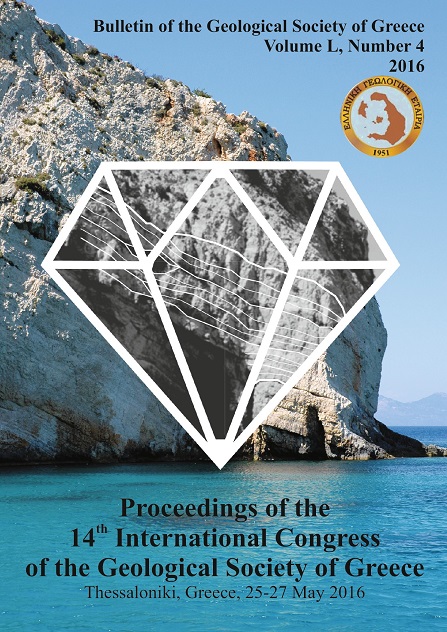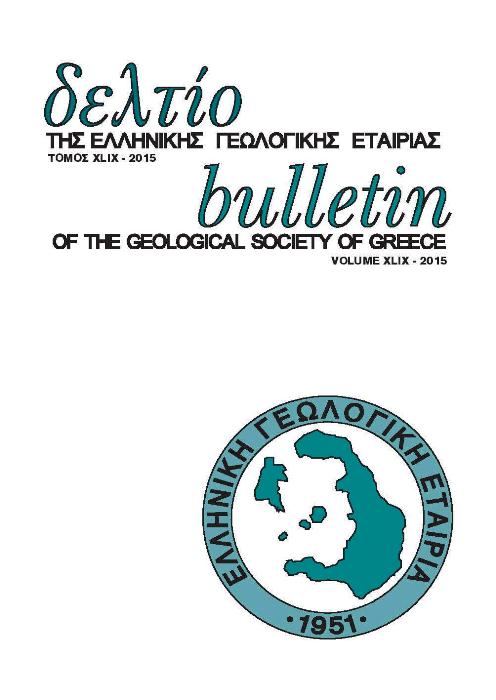GEOCHEMICAL MODELING OF ABANDONED SULFIDIC FLOTATION MILL TAILINGS: THE CASE OF KIRKI, NE GREECE

Περίληψη
Το εργοστάσιο εμπλουτισμού της Κίρκης εντοπίζεται περίπου 5 km νότια του μεταλλείου του Αγίου Φιλίππου. Τα απορρίμματα της επεξεργασίας του μεταλλεύματος είναι εκτεθειμένα στις ατμοσφαιρικές συνθήκες, με αποτέλεσμα τη συσσώρευση μετεωρικού νερού στην επιφάνειά τους. Τα επιφανειακά ρευστά αλληλεπιδρούν με το λεπτόκοκκο υλικό με υψηλό φορτίο βαρέων μετάλλων, με τελικό αποτέλεσμα τη δημιουργία όξινων και οξειδωτικών διαλυμάτων με υψηλό φορτίο μετάλλων στην επιφάνεια των απορριμμάτων. Τα απορρίμματα της επεξεργασίας αποτελούνται κυρίως από σύνδρομα ορυκτά της μεταλλοφορίας (χαλαζίας, δικίτης/καολινίτης, πυροφυλλίτης και άστριοι), ενώ τα κυριότερα δευτερογενή ορυκτά που εντοπίζονται αφορούν ορυκτά της ομάδας του γιαροσίτη, γύψο και αγκλεσίτη. Μοναδική πρωτογενής φάση της μεταλλοφορίας που εντοπίζεται στα απορρίμματα είναι ο σιδηροπυρίτης. Ο λεπτόκοκκος χαρακτήρας των απορριμμάτων της επεξεργασίας ευνοεί ταχύτατες αντιδράσεις μεταξύ των επιφανειακών ρευστών με το υλικό των απορριμμάτων. Το γεωχημικό πρόγραμμα PHRΕEQC, με χρήση της βάσης δεδομένων MINTEQ, εφαρμόσθηκε για τη διερεύνηση της λειτουργίας του συστήματος «επιφανειακό διάλυμα - δευτερογενή ορυκτά», με την ανάπτυξη τριών διαφορετικών μοντέλων, «Άμεση Καθίζηση», «Ανάμιξη με Μετεωρικό Νερό» και «Εξάτμιση». Σε κάθε μοντέλο εξετάζεται ο μηχανισμός με τον οποίο βαρέα μέταλλα δεσμεύονται στο πλέγμα δευτερογενών ορυκτών, αλλά και αποδεσμεύονται/διαλυτοποιούνται μετά από διαλυτοποίηση μετασταθών φάσεων.
Λεπτομέρειες άρθρου
- Πώς να δημιουργήσετε Αναφορές
-
Triantafyllidis, S. (2016). GEOCHEMICAL MODELING OF ABANDONED SULFIDIC FLOTATION MILL TAILINGS: THE CASE OF KIRKI, NE GREECE. Δελτίο της Ελληνικής Γεωλογικής Εταιρείας, 50(4), 2342–2351. https://doi.org/10.12681/bgsg.14300
- Ενότητα
- Περιβαλλοντική Γεωλογία

Αυτή η εργασία είναι αδειοδοτημένη υπό το CC Αναφορά Δημιουργού – Μη Εμπορική Χρήση 4.0.
Οι συγγραφείς θα πρέπει να είναι σύμφωνοι με τα παρακάτω: Οι συγγραφείς των άρθρων που δημοσιεύονται στο περιοδικό διατηρούν τα δικαιώματα πνευματικής ιδιοκτησίας επί των άρθρων τους, δίνοντας στο περιοδικό το δικαίωμα της πρώτης δημοσίευσης. Άρθρα που δημοσιεύονται στο περιοδικό διατίθενται με άδεια Creative Commons 4.0 Non Commercial και σύμφωνα με την οποία μπορούν να χρησιμοποιούνται ελεύθερα, με αναφορά στο/στη συγγραφέα και στην πρώτη δημοσίευση για μη κερδοσκοπικούς σκοπούς. Οι συγγραφείς μπορούν να: Μοιραστούν — αντιγράψουν και αναδιανέμουν το υλικό με κάθε μέσο και τρόπο, Προσαρμόσουν — αναμείξουν, τροποποιήσουν και δημιουργήσουν πάνω στο υλικό.




